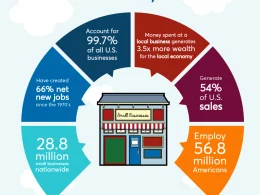In the intricate world of aviation, the financial dynamics shaping the skies have always been a topic of profound intrigue. Airlines, spanning the globe, operate in a realm where revenue strategies are meticulously crafted and constantly adapted to navigate through the turbulence of economic fluctuations, fuel price volatility, and shifting consumer demands.
Breaking Down the Revenue Models:
1. Fare Structures and Ancillary Revenue:
At the heart of airlines’ revenue models are their fare structures. Basic Economy, Economy, Premium Economy, Business, and First Class—each tier strategically priced to cater to different passenger segments. However, beyond ticket sales, ancillary revenue streams have become a pivotal component. These encompass fees for checked baggage, onboard meals, seat selection, Wi-Fi, and more, contributing significantly to airlines’ bottom lines.
2. Yield Management:
Airlines employ sophisticated yield management systems, leveraging data analytics and algorithms to optimize ticket pricing. This dynamic pricing strategy involves adjusting fares based on factors such as demand, time of booking, flight occupancy, and even the browsing habits of potential customers. This practice allows airlines to maximize revenue on each flight.
3. Loyalty Programs:

Frequent flyer programs serve not only as a means to retain customer loyalty but also as a considerable revenue generator. Through partnerships, co-branded credit cards, and point-based reward systems, airlines secure additional income streams while fostering customer retention.
4. Cargo Operations:
Beyond passenger travel, airlines exploit their fleets for cargo transportation, harnessing unused belly space to transport goods and drive additional revenue. This diversification of services helps airlines hedge against fluctuations in passenger demand.
Uncovering Challenges and Innovations:
While these revenue strategies form the cornerstone of airlines’ financial sustainability, the industry faces a myriad of challenges:
– Fuel Price Volatility:
Fluctuations in oil prices remain a constant headache for airlines, affecting operational costs and, in turn, their profit margins. Innovations in fuel-efficient aircraft and sustainable aviation fuels aim to mitigate this challenge.
– Pandemic Fallout:
The COVID-19 pandemic wrought unprecedented havoc on the aviation industry, forcing airlines to adapt swiftly. From route optimization to cost-cutting measures and fleet restructuring, carriers endeavored to weather the storm.
– Technological Disruptions:
Advancements in technology, such as blockchain for ticketing and distribution and AI for enhancing customer experiences, pose both opportunities and threats to traditional airline revenue models.
Verifying Information and Ethical Reporting:
As a journalist delving into airline finances, it’s imperative to triangulate information from multiple credible sources—industry reports, financial statements, expert opinions, and interviews with airline executives. Upholding journalistic ethics, ensuring accuracy, and respecting confidentiality in sourcing information remains paramount.
In conclusion, airlines’ revenue strategies weave a complex tapestry, blending traditional ticketing models with innovative approaches to sustain and evolve in an ever-changing market. Understanding these dynamics offers a glimpse into the intricacies of an industry that traverses not just skies, but also economic landscapes.












